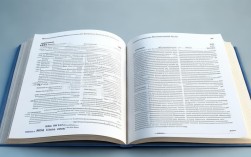雅思写作是考试中让很多考生感到头疼的部分,尤其是大作文(Task 2),它不仅考察语言能力,还要求考生具备清晰的逻辑思维和丰富的观点表达,如何写出高分雅思作文?本文将从审题、结构、论证、语言四个方面详细解析,帮助考生提升写作水平。

审题:精准理解题目要求
雅思作文的第一步是审题,很多考生因为理解偏差导致跑题,最终影响分数,审题时要注意以下几点:
- 明确题目类型:雅思大作文通常分为四种类型——观点类(Agree/Disagree)、讨论类(Discuss Both Views)、利弊类(Advantages/Disadvantages)、问题解决类(Problem/Solution),不同类型的题目,写作框架略有不同。
- 抓关键词:题目中的核心词汇决定了写作方向,题目问“是否应该禁止广告针对儿童”,关键词是“广告”“儿童”“禁止”,写作时必须围绕这些展开。
- 避免过度延伸:有些考生喜欢加入个人经验或社会热点,但必须确保与题目直接相关,否则容易偏题。
结构:清晰逻辑框架是高分关键
雅思写作评分标准中,逻辑连贯性(Coherence and Cohesion)占25%,因此合理的结构至关重要,推荐使用四段式或五段式结构:
(1)引言(Introduction)
- 背景句:简要介绍话题,避免直接抄题目。
- 明确立场:清晰表达自己的观点(适用于观点类题目)。 文章结构**:简单说明下文如何展开。
示例:
Advertising targeted at children has become increasingly common, raising concerns about its impact. While some argue that such ads should be banned, I believe a complete prohibition is unnecessary, and alternative measures can be more effective.
(2)主体段1(Body Paragraph 1)
- 主题句:明确本段核心观点。
- 论证:用解释、例子或数据支持观点。
- 衔接:使用逻辑连接词(Furthermore, For instance, Therefore)使行文流畅。
示例:

One reason why banning child-targeted ads may be excessive is that advertisements can also educate. For example, many public service announcements aimed at children promote healthy eating or environmental awareness. If all ads were prohibited, these positive messages would also disappear.
(3)主体段2(Body Paragraph 2)
- 提出另一角度(适用于讨论类或利弊类题目)。
- 平衡论证:即使支持某一方,也可以适当承认对立观点的合理性。
示例:
However, it is undeniable that some advertisements exploit children’s vulnerability. Junk food ads, for instance, often use cartoon characters to attract young audiences, contributing to unhealthy dietary habits. Rather than an outright ban, stricter regulations on misleading ads would be a better solution.
(4)Conclusion)
- 总结核心观点,避免引入新信息。
- 提出建议或展望(适用于问题解决类题目)。
示例:
In conclusion, while child-targeted advertising has potential risks, a blanket ban is not the optimal approach. Instead, governments and parents should collaborate to regulate harmful ads while preserving beneficial ones.
论证:如何让观点更有说服力
雅思作文不是单纯的语言测试,而是考察考生是否能有效论证,以下是几种增强说服力的方法:
(1)举例论证
- 具体案例比抽象描述更有力,讨论“科技是否拉远人际关系”时,可以提到“社交媒体使人们更关注虚拟互动,而忽视面对面交流”。
- 数据支持(如“According to a survey by…”)能提升可信度,但如果没有确切数据,可以用“Studies show…”或“Research indicates…”代替。
(2)对比论证
- 通过对比不同情况或时间段,突出观点。
In the past, people relied on letters for long-distance communication, which could take weeks. Today, instant messaging allows real-time interaction, significantly improving efficiency.
(3)因果分析
- 解释现象的原因或影响。
The rise of online shopping has led to the decline of physical stores, resulting in job losses in the retail sector.
语言:提升词汇和语法多样性
雅思写作对语言的要求较高,考生需避免重复用词和简单句堆砌。
(1)词汇多样性
- 同义词替换:“important”可以换成“crucial, vital, significant”。
- 避免过于口语化:如“a lot of”改为“a considerable number of”,“kids”改为“children”。
(2)句式变化
- 复合句:使用定语从句、状语从句等。
Governments should invest in renewable energy, which can reduce carbon emissions.

- 倒装句:
Not only does technology improve efficiency, but it also enhances communication.
- 被动语态(适度使用):
Measures should be taken to address this issue.
(3)避免常见错误
- 主谓一致:如“The government has…”而非“The government have…”。
- 冠词使用:可数名词单数前加“a/an/the”。
- 时态统一:议论文一般用现在时,举例过去事件时用过去时。
高分技巧与常见误区
(1)时间管理
- 审题+提纲:5分钟
- 写作:30分钟
- 检查:5分钟(重点看语法、拼写、逻辑连接词)
(2)常见低分原因
- 模板化严重:考官能识别生搬硬套的模板句。
- 论证空洞:只有观点,没有解释或例子。
- 字数不足:建议写270-300词(官方要求至少250词)。
(3)个性化提升建议
- 多读高分范文:分析其结构、用词和论证方式。
- 限时练习:模拟考试环境,培养写作速度。
- 找人批改:找出自己不易察觉的错误。
雅思写作没有捷径,但掌握正确方法可以事半功倍,清晰的逻辑、充实的论证、地道的语言是高分的关键,与其死记硬背模板,不如多练习思考与表达,真正提升写作能力。



